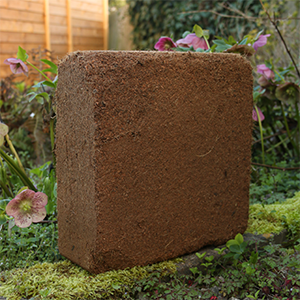
Choosing coir over peat: The environmental benefits of CoirProducts
For years, peat has been a popular choice in gardening and horticulture, known for its ability to retain moisture and support plant growth. But as

To celebrate World Book Day, we spoke to Tanya Anderson (@lovely.greens), the author of A Woman’s Garden. Tanya is an organic gardener, soap maker, beekeeper, author, and a green living enthusiast. In this Garden Story, Tanya shares with us how she came to love gardening by chance and how gardening comes to be a type of salvation in a technologically-driven world. She also talks about her book, A Woman’s Garden, what she loved most about writing, and how reading continues to inspire her.
A discovery by chance
Although she grew up with family members who loved gardening and plants, it wasn’t until her 20s that she came to love gardening. Living in London at the time, where she worked long hours, flipping through TV channels one evening, Tanya discovered BBC Gardeners’ World. “An entire television show dedicated to gardening? I was immediately hooked,” she says. She recalls her early experiences, “I remember those first forays to the closest gardening centre, buying loads of random plants, and taking in plants, asking staff for ID”. That was nearly fifteen years ago and since then Tanya says she has learned much more about growing a garden and not only that, but also to grow a connection with the soil. “I’m self-taught but have learned from reading and watching the best!”
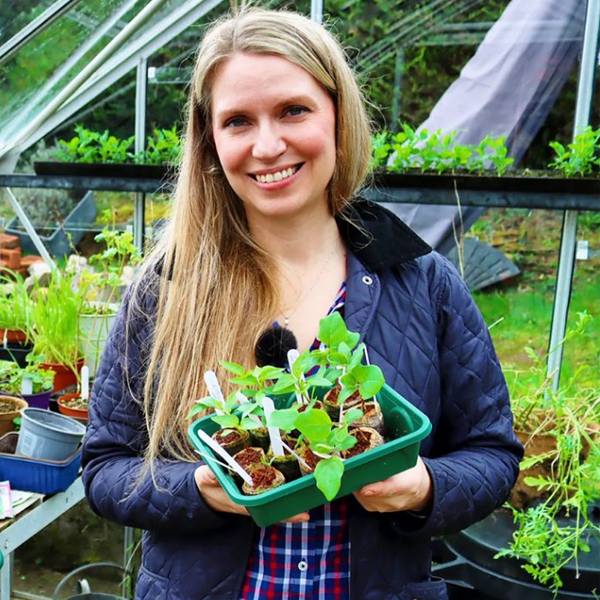
Sharing with us what she loves to grow, Tanya says, “Although I do love gardening for gardening’s sake, what I love to grow most are edible crops and plants that I can use in soap and skincare. There’s nothing like digging the first potatoes of the year, eating the first raspberry, and watching seeds transform into beautiful and delicious food. I use homegrown calendula in salves and handmade soap, lavender in infused oil and balms, and marshmallow for soothing creams. I also love growing plants that I know will benefit the wildlife in my garden and allotment. I get immense pleasure from seeing birds and beasts make themselves at home in my growing spaces.”
Benefits of gardening and greener living
In a busy, technologically-driven world, Tanya says gardening comes to become a type of salvation. “For most of us, gardening is one of the few ways that we can create a connection with nature and with our food. We live in a technology-driven world built on concrete surfaces and steel-framed structures. The most time that many people spend outside is waiting for the bus or getting into their cars for a commute. When we lose connection, we care less, and that is at the heart of what is happening to our planet. Gardening is a type of salvation, and what we do and grow matters,” she says. Tanya reminds us that each of our growing spaces, no matter the size, is a piece of a larger ecosystem that makes up our neighbourhoods, towns, counties, countries, and ultimately the entire world. The positive aspects of caring for our personal outdoor spaces are almost too many to count, for our own health and homes and for the people, animals, and living landscapes all around us.
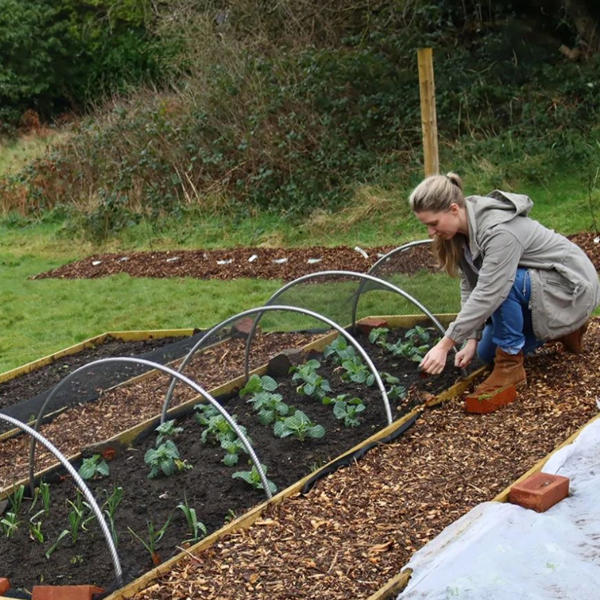
Tanya describes herself as a green living enthusiast, saying, “I’m all about growing useful plants — food, therapeutic plants, natural dyes, and anything else that we can grow and use for home, health, and creativity. Every mouthful of food matters, not just for reducing the impact on the environment but for realising that we’re part of that environment.” She goes on to share a few tips on how we can make little changes to promote greener living. While some of the ways that we can use plants to make positive changes are as simple as organically-grown food, there are so many other avenues. “We can grow our own skincare, medicines, and even bio-fuel,” Tanya explains, adding, “then of course there’s composting and that process of recycling the waste our garden creates right back into the garden. There’s no other way for us to be so involved in, and understand, a natural sustaining system as we can through the garden. At least, if we set out with that intention.”
A Woman’s Garden
Tanya’s book, A Woman’s Garden, was published in 2021. She wrote A Woman’s Garden to show the many ways that we can grow and use plants in our day-to-day lives, and to inspire people who hadn’t thought of plants in the ways that our forebears perhaps did. She goes on to say that, “in garden media, there is a lot of choice for books on growing ornamental gardens, houseplants, or vegetable gardens and less on how we can grow plants to connect with both land and heritage. This is a small developing niche that I’m a part of and it reflects a historical use of plants for both health (bodily and mentally) and the creative arts. For naturally dyeing wool and flavouring food; for healing, making, baking, and cleaning the home. Traditional skills that are less practiced in the West as a way of life but are making a comeback.”
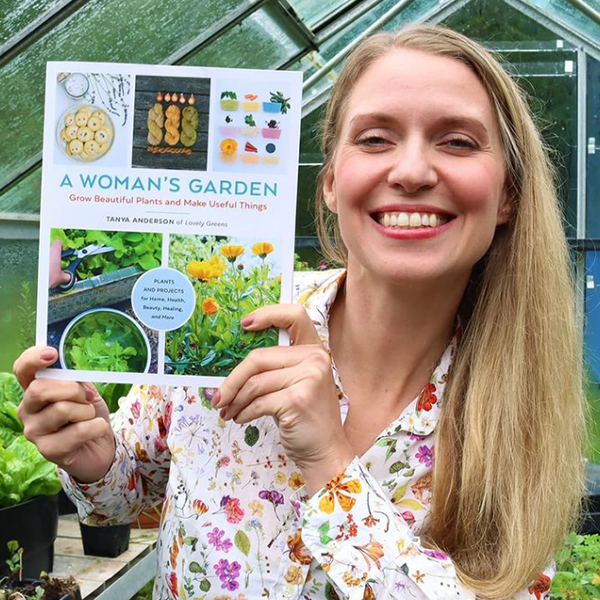
Tanya says that over the years, she has seen a lot of women take up this type of growing, and know that it appeals to those with a feminine spirit. “I wrote A Woman’s Garden to show the gardens and ethos of some of these women — focusing on women who grow a specific category of useful plants and why. I hope that it will inspire a new generation of people to consider a different approach to gardening — one of growing and making!”
A new experience
Reflecting on the process of writing and publishing the book, Tanya says it involved incredibly hard work writing, doing the photography, and working with quite a few other gardeners in featuring their gardens. The publication of her book was also delayed due to Covid, which led to a lot of stress involved there. “In the end, all of the hard work and challenging situations were worth it though. By book launch date, they were practically forgotten.”
Tanya says what she loved most of all about the experience of writing a book was gathering her thoughts on the topic and sharing them together in one physical piece. “Being mainly a digital content creator, it was an experience to hold my book for the first time! It was also incredibly rewarding to be able to offer a finished book that people could hold in their hands and refer back to for years. I also value and treasure the friendships and connections that I was able to forge with other people through the writing process too. The women featured in the book but also some who live on my Island and came to my aid when I needed their help. Herbalists, weavers, and foodies who invited me into their growing spaces and introduced me to their beautiful artisan makes. I’ve made many new friends during the process of writing A Woman’s Garden.”
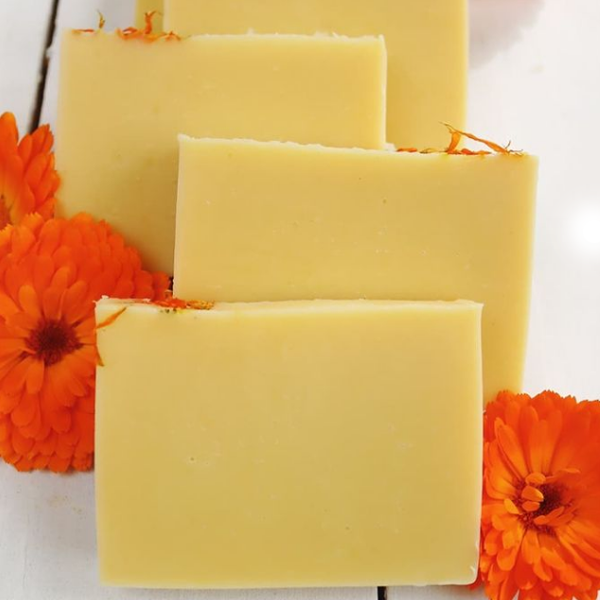
When it comes to gardening, Tanya draws inspiration from many different gardeners. Reflecting on this, she says, “in the old days, it was Alan Titchmarsh and the lovely Carole Klein on Gardeners’ World. They still inspire me but since the take-up of social media, I’ve connected with so many incredible gardeners, eco-warriors, and green living enthusiasts. The world of garden social media makes every day a school day! There are too many people to list but Charles Dowding and Jack Wallington always present something to think about, whether it’s soil or weeds. I also follow the lovely Frances Tophill who I met when she visited my garden for a segment for Gardeners’ World. That was an unforgettable experience and the feature on me, my garden, and growing skincare plants aired in both 2019 and 2020.”
Finding inspiration in reading
In marking book day, we also asked Tanya about her favourite books. Growing up, Tanya was such a bookworm reading everything from cheesy romance novels that were probably not suitable for her age to science fiction. “My favourite author growing up was Jean Auel and I’ve read her books many times over. Beginning with The Clan of the Cave Bear, which I read for the first time at age eleven. I loved that the character, Ayla, was so close to my age and that she not only overcame huge personal and cultural challenges but came out on top. Her passion for medicinal herbs is honestly one of the reasons that I think I was so drawn to the idea of useful plants. How funny is it that fictional characters can do so much to inspire real people? That’s the real power of books and stories.”
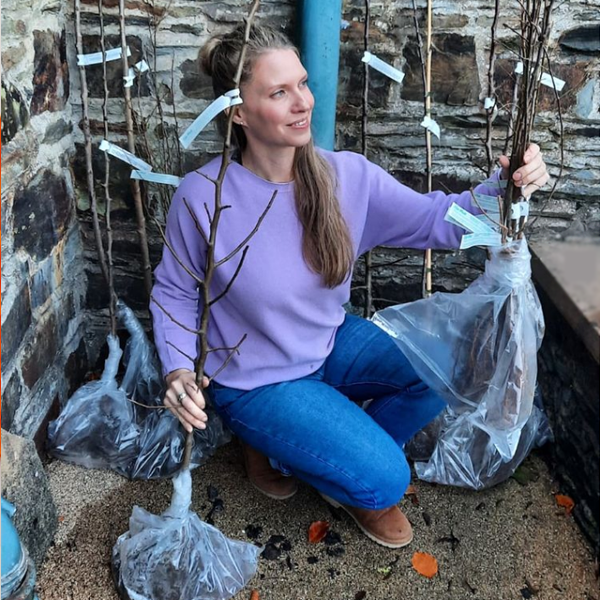
Most of what she reads now is factual and related to gardening. Sharing some of her favourites, Tanya says, “The Salad Garden by Joy Larkom blows my mind as nearly everything in it is a leafy green. A full book on salads! I also love everything written by John Seymour, from The Fat of the Land to the Self-sufficient Gardener. Books on my coffee table right now include The Orchard Book by Wade Muggleton and Growing Beans by Susan Young, both published by the permaculture-focused Permanent Publications. I also received the updated version of Monty Don’s The Complete Gardener for Christmas and it too is becoming a favourite. Everyone loves Monty.”
It’s always a hard choice choosing between curling up with a good book or spending time in one’s garden. Tanya says, in the winter, she’ll definitely opt for a good book some place warm and cosy. Once the light and warmth comes back though, she says, “it’s in the garden, hands down. That’s not to say that I don’t garden in the winter, it’s just that what I love about gardening isn’t just plants; it’s the sound of birds and bees and the smell of living plants and soil.” And as Tanya goes on to say, “sometimes it’s okay to let the garden rest while we cultivate our imaginations inside a good book!”
To find more about Tanya:
Tanya’s book, A Woman’s Garden: Grow Beautiful Plants and Make Useful Things, is now available through all major booksellers: https://lovelygreens.com/a-womans-garden-grow-beautiful-plants-and-make-useful-things/
Website: https://lovelygreens.com/
YouTube: https://www.youtube.com/lovelygreens
Instagram: https://www.instagram.com/lovely.greens/
Lovely Greens Handmade: https://lovelygreens.co.uk/

For years, peat has been a popular choice in gardening and horticulture, known for its ability to retain moisture and support plant growth. But as

At Coir Products by Salike®, we take pride in the quality of our products and the positive impact we make on the communities who help